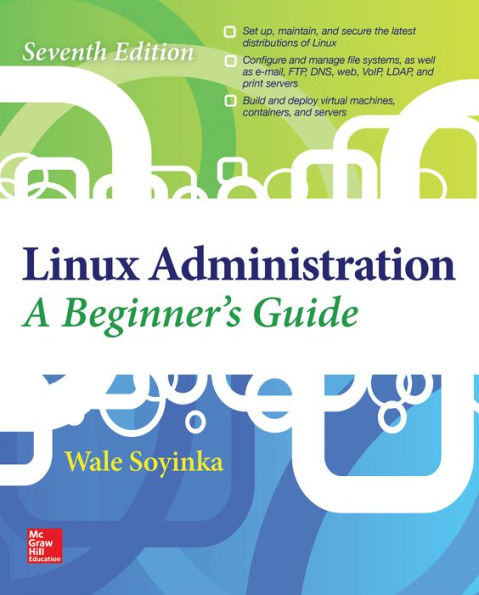Effectively set up and manage any version of Linux on individual servers or entire networks using this practical resource. Fully updated to cover the latest tools and techniques, Linux Administration: A Beginner’s Guide, Seventh Edition features clear explanations, step-by-step instructions, and real-world examples. Find out how to configure hardware and software, work from the GUI or command line, maintain Internet and network services, and secure your data. Performance tuning, virtualization, containers, software management, and backup solutions are covered in detail.
• Install and configure Linux, including the latest distributions from Fedora, Ubuntu, CentOS, openSUSE, Debian, and RHEL
• Manage users, permissions, files, folders, and applications
• Set up and administer system services and daemons
• Manage software from source code or binary packages
• Customize, build, or patch the Linux kernel
• Work with physical and virtual file systems, such as proc, SysFS, and cgroup
• Understand networking protocols, including TCP/IP, ARP, IPv4, and IPv6
• Build reliable firewalls and routers with Netfilter (iptables and nftables) and Linux
• Monitor and test network activity and minimize security threats
• Create and maintain DNS, FTP, web, e-mail, print, LDAP, and VoIP servers
• Share resources using GlusterFS, NFS, and Samba
• Implement popular cloud-based technologies using Linux virtualization and containers using KVM and Docker
Effectively set up and manage any version of Linux on individual servers or entire networks using this practical resource. Fully updated to cover the latest tools and techniques, Linux Administration: A Beginner’s Guide, Seventh Edition features clear explanations, step-by-step instructions, and real-world examples. Find out how to configure hardware and software, work from the GUI or command line, maintain Internet and network services, and secure your data. Performance tuning, virtualization, containers, software management, and backup solutions are covered in detail.
• Install and configure Linux, including the latest distributions from Fedora, Ubuntu, CentOS, openSUSE, Debian, and RHEL
• Manage users, permissions, files, folders, and applications
• Set up and administer system services and daemons
• Manage software from source code or binary packages
• Customize, build, or patch the Linux kernel
• Work with physical and virtual file systems, such as proc, SysFS, and cgroup
• Understand networking protocols, including TCP/IP, ARP, IPv4, and IPv6
• Build reliable firewalls and routers with Netfilter (iptables and nftables) and Linux
• Monitor and test network activity and minimize security threats
• Create and maintain DNS, FTP, web, e-mail, print, LDAP, and VoIP servers
• Share resources using GlusterFS, NFS, and Samba
• Implement popular cloud-based technologies using Linux virtualization and containers using KVM and Docker

Linux Administration: A Beginner's Guide, Seventh Edition
672
Linux Administration: A Beginner's Guide, Seventh Edition
672eBook
Related collections and offers

Product Details
| ISBN-13: | 9780071845373 |
|---|---|
| Publisher: | McGraw Hill LLC |
| Publication date: | 12/22/2015 |
| Series: | Beginner's Guide |
| Sold by: | Barnes & Noble |
| Format: | eBook |
| Pages: | 672 |
| File size: | 58 MB |
| Note: | This product may take a few minutes to download. |
